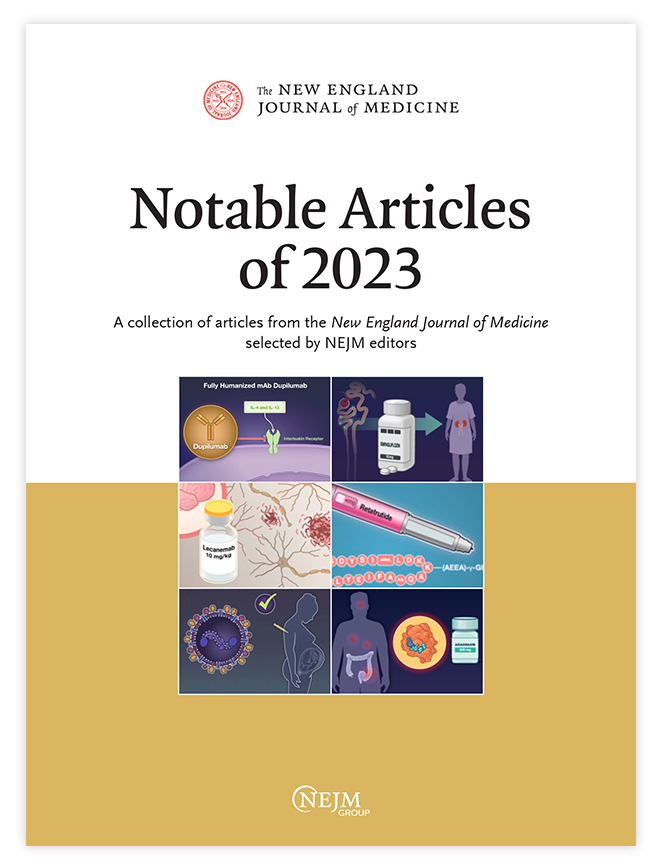Neurodevelopmental Disorder Caused by Deletion of CHASERR, a lncRNA Gene.
IF 96.2
1区 医学
Q1 MEDICINE, GENERAL & INTERNAL
引用次数: 0
Abstract
CHASERR encodes a human long noncoding RNA (lncRNA) adjacent to CHD2, a coding gene in which de novo loss-of-function variants cause developmental and epileptic encephalopathy. Here, we report our findings in three unrelated children with a syndromic, early-onset neurodevelopmental disorder, each of whom had a de novo deletion in the CHASERR locus. The children had severe encephalopathy, shared facial dysmorphisms, cortical atrophy, and cerebral hypomyelination - a phenotype that is distinct from the phenotypes of patients with CHD2 haploinsufficiency. We found that the CHASERR deletion results in increased CHD2 protein abundance in patient-derived cell lines and increased expression of the CHD2 transcript in cis. These findings indicate that CHD2 has bidirectional dosage sensitivity in human disease, and we recommend that other lncRNA-encoding genes be evaluated, particularly those upstream of genes associated with mendelian disorders. (Funded by the National Human Genome Research Institute and others.).lncRNA基因CHASERR缺失导致的神经发育障碍
CHASERR 是一种与 CHD2 相邻的人类长非编码 RNA(lncRNA),CHD2 是一种编码基因,其中的功能缺失变异可导致发育不良和癫痫性脑病。在这里,我们报告了我们在三个患有综合征、早发神经发育障碍的非亲属儿童身上的发现,他们每个人的CHASERR基因座都有一个从头缺失。这些儿童患有严重的脑病、共同的面部畸形、皮质萎缩和脑髓鞘功能减退--这种表型与CHD2单倍体缺乏症患者的表型截然不同。我们发现,CHASERR 缺失会导致患者细胞系中 CHD2 蛋白丰度增加,CHD2 转录本顺式表达增加。这些研究结果表明,CHD2在人类疾病中具有双向剂量敏感性,我们建议对其他lncRNA编码基因进行评估,尤其是那些与泯灭性疾病相关的基因的上游基因。(由美国国家人类基因组研究所等资助)。
本文章由计算机程序翻译,如有差异,请以英文原文为准。
求助全文
约1分钟内获得全文
求助全文
来源期刊

New England Journal of Medicine
医学-医学:内科
CiteScore
145.40
自引率
0.60%
发文量
1839
审稿时长
1 months
期刊介绍:
The New England Journal of Medicine (NEJM) stands as the foremost medical journal and website worldwide. With an impressive history spanning over two centuries, NEJM boasts a consistent publication of superb, peer-reviewed research and engaging clinical content. Our primary objective revolves around delivering high-caliber information and findings at the juncture of biomedical science and clinical practice. We strive to present this knowledge in formats that are not only comprehensible but also hold practical value, effectively influencing healthcare practices and ultimately enhancing patient outcomes.
 求助内容:
求助内容: 应助结果提醒方式:
应助结果提醒方式:


